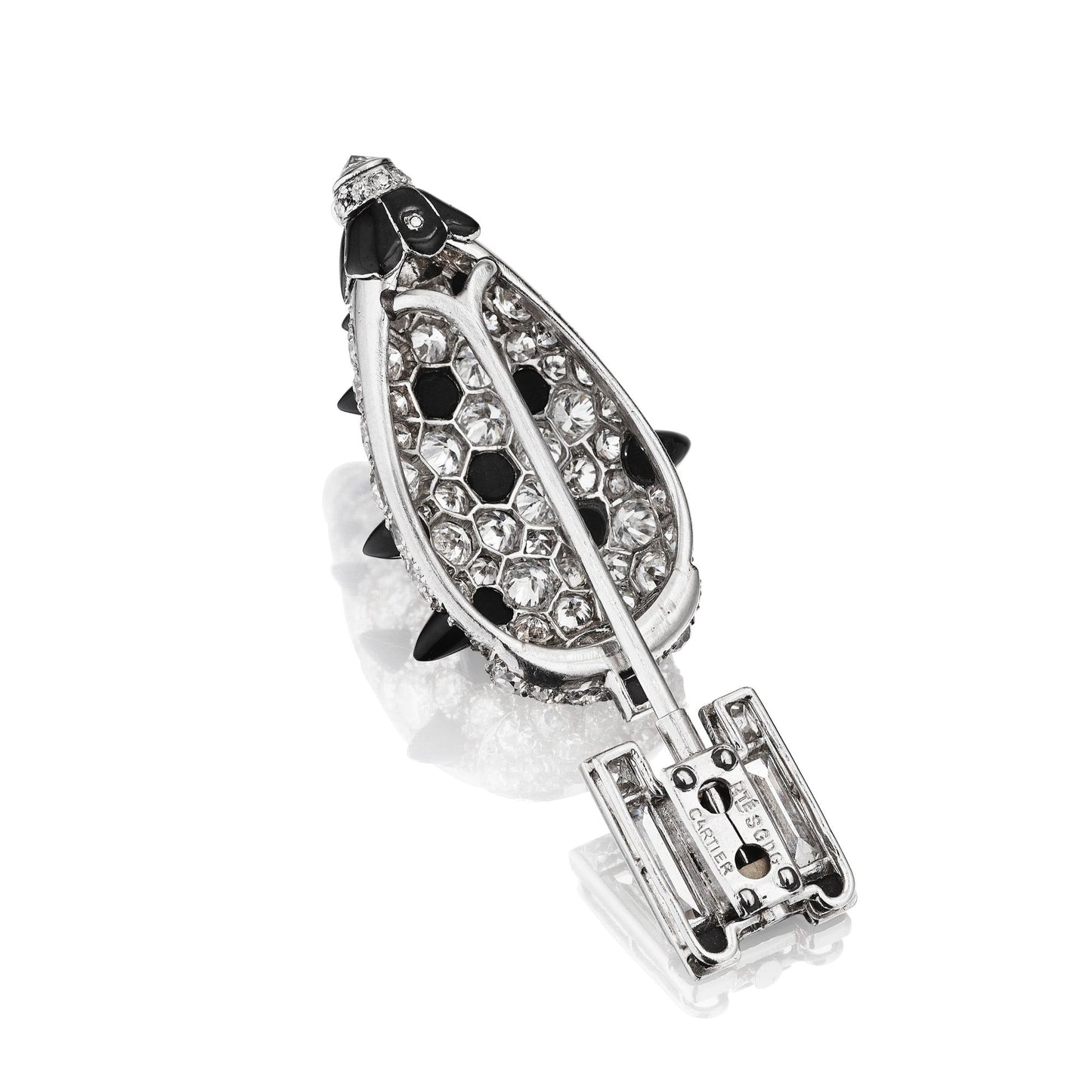ART DECO BLACK ONYX, DIAMOND, AND ENAMEL TOPIARY BROOCH BY CARTIER, PARIS, CIRCA 1925
ART DECO BLACK ONYX, DIAMOND, AND ENAMEL TOPIARY BROOCH BY CARTIER, PARIS, CIRCA 1925
SOLD
A brooch designed as a potted topiary set throughout with European-cut diamonds, interspersed with French-, baguette-, and single-cut diamonds, accented with black onyx detailing, completed with black enamel accents and a reverse-set diamond at the apex; mounted in platinum, with French assay marks
- Signed Cartier, no. 07902, RTÉ SGDG
- In original Cartier fitted box
- Measurements: 2 x 7/8 x 1/2 inches
Additional cataloguing
Literature
Nadelhoffer, Hans. Cartier: Jewelers Extraordinary. New York: Harry N. Abrams, 1984, pl. 11.
Biography
Cartier was founded in Paris in 1847 by Louis-François Cartier. His three grandsons, Louis, Pierre, and Jacques, built the house into a famous international jewelry empire serving royalty, Hollywood stars, and socialites. Cartier has created some of the most important jewelry and objects of art of the twentieth century with many iconic designs such as mystery clocks, Tutti Frutti jewelry and the Panthère line. In 1983, The Cartier Collection was established with the objective of acquiring important pieces that trace the firm’s artistic evolution. Today, Cartier has 200 stores in 125 countries.
Significance
While much of the jewelry produced in the Art Deco movement focused solely on geometric shapes, many inspired new forms emerged from nature, or the Western fascination with the Far East. Geometry would often underlay the inspired motif. Abstract and stylized forms in squares, circles, and rectangles replaced the flowers, leaves, and stems of traditional naturalistic motifs.
Brooches, one of the most popular jeweled mediums, changed from realistic flower corsages to miniature stylized gardens adorned with diamonds and colored gems. This brooch by Cartier reflects these changes in design and is a stunning characterization of a potted topiary set throughout with diamonds and accented by black onyx. The garden landscapes of the 1920s were opulent and adorned with exotic flowers, well-manicured gardens and arranged with antique vases. Topiary, the art of forming perennials into rigorous forms was an ancient art dating back to the Romans. The labor-intensive process was favored in large formal gardens of the wealthy, who could afford the garden staff to maintain and care for the carefully considered design of a topiary. This brooch is the jeweled miniature of that aesthetic and was meticulously constructed with variety of cuts of diamonds to reflect varied textures and studded with spiked black onyx detailing to add volume and drama to the jewel.
The 1920s were a time of splendor and beauty, fashion and design thrived, and drew ideas from each other. At the important 1925 Exposition Internationale des Arts Décoratifs et Industriels Modernes in Paris, Cartier chose not to exhibit at the Grand Palais with all the other jewelers but next to the fashion houses in the Pavilion de L’Elegance. The company maintained a display in the center of the atrium that was studded with luxurious topiary, like an elegant paradise garden of jewelry. This impeccably designed brooch demonstrates the refined talent of Cartier and is an exceptional example of Art Deco elegance that would look chic and elegant today.















